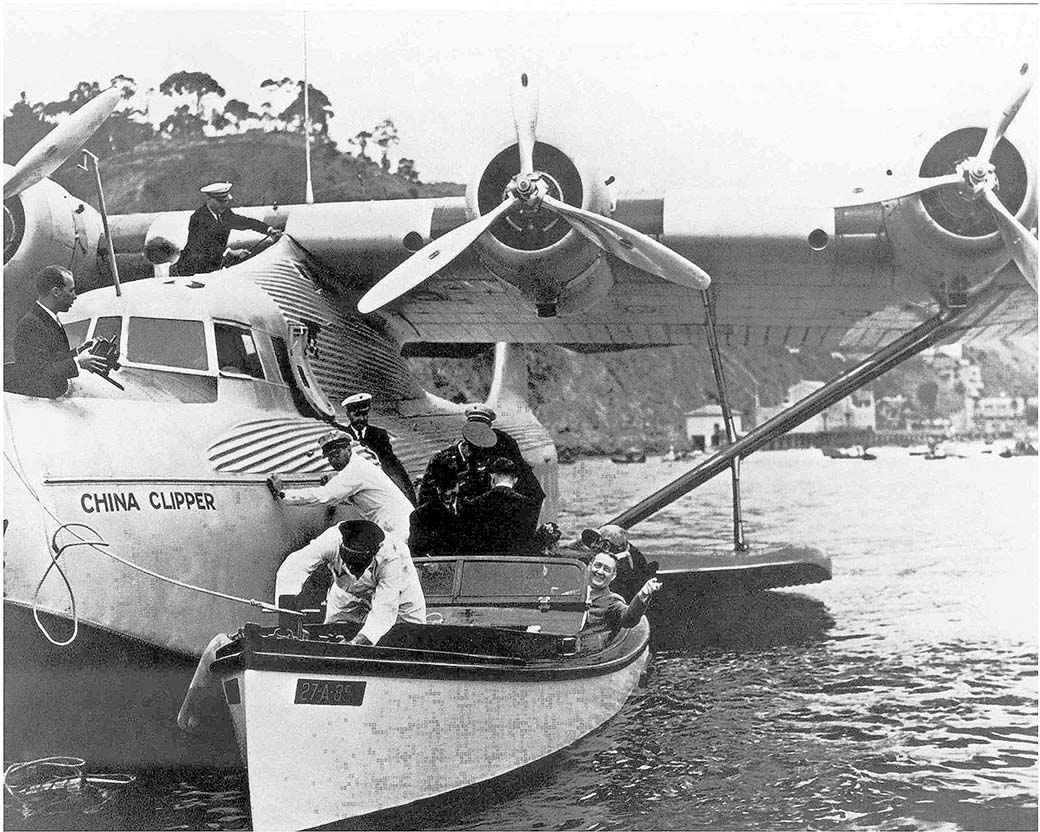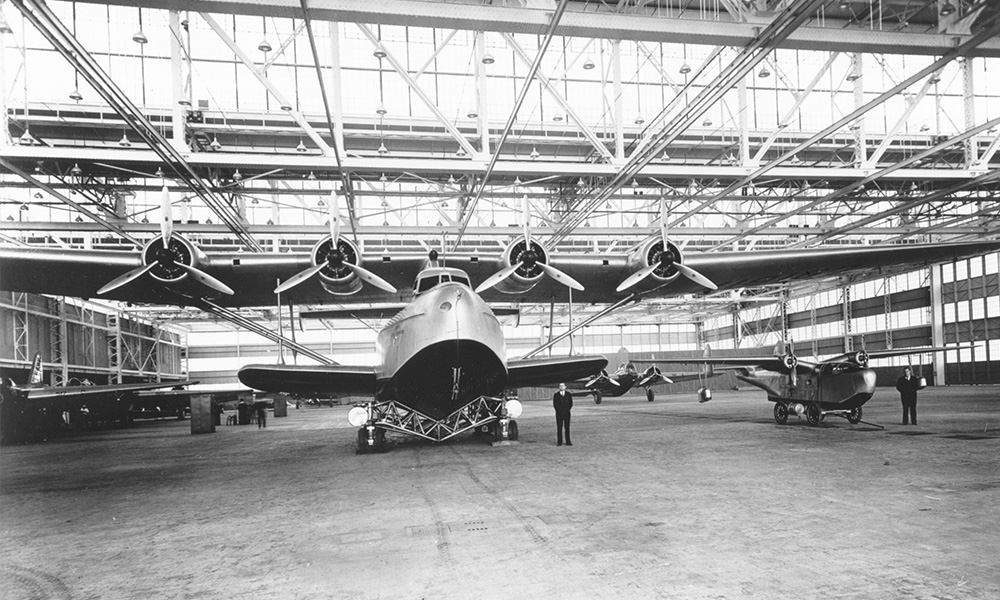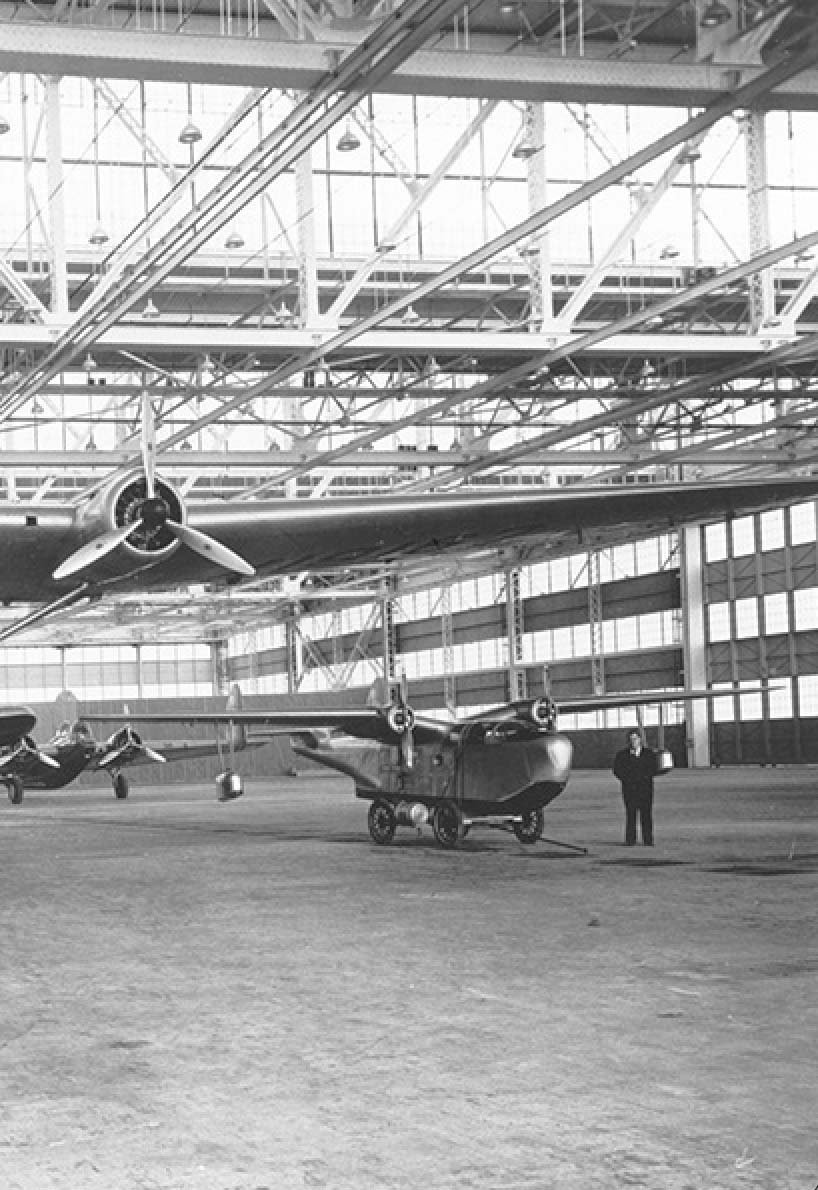Glenn Martin’s Birds of a Feather
Two Branches of the Family Tree:
The “Russian Clipper" & the “Tadpole Clipper"
In 1937, the Glenn L. Martin Company proudly showed off two examples of aviation progress --
The M-156 "Russian Clipper" and the M-162A "Tadpole Clipper."
M-156 "Russian Clipper"
The M-156 was big brother to the three Martin M-130s - The China Clipper, The Philippine Clipper and the Hawaii Clipper -- then flying the Pacific for Pan American. Martin had built the plane in hopes of catching more of Pan Am’s business for expanded trans-ocean capacity.
The M-156 was a more powerful and longer-ranged version of the earlier flying boat design. She had a longer wingspan, twin vertical stabilizers and rudders for improved aerodynamic stability and control, and more powerful Wright Cyclone engines, along with greater fuel capacity. The M-156 was meant to have been a contender as transoceanic transport.
Unfortunately for Martin, Pan Am had already cast its lot and signed a contract with Boeing for their new flying boat design, the B-314. For Pan Am, it was a fortuitous turn towards a successful new airplane. The B-314 would prove its worth in operations across both the Pacific and the Atlantic, and would play a critical role in the coming war.
The M-156 turned out to be a one-off, essentially a prototype, and its construction marked the end of the line for Martin’s foray into civilian flying boat offerings(However the company did produce civilian land planes after WWII). With no US customers, Martin managed to find a home for the big bird with the Soviet government in 1938. After a brief flight from Baltimore to Floyd Bennett Field in New York City, the big plane was dismantled and shipped off to the Soviet Union. She was henceforth remembered as the “Russian Clipper,” and disappeared from American skies to live out a career shrouded in mystery in the Soviet Far East flying for Aeroflot. Aviation historian R.E.G. Davies made a trip to the former Soviet Union in the 1990s looking for information about the airplane’s fate. He concluded the M-156 had been damaged and subsequently scrapped years before.
M-162A "Tadpole Clipper" at the Martin factory in Maryland (PelicanFilms/Martin-Marietta)
M-162A "Tadpole Clipper" and the PBM "Mariner"
Glenn Martin, who had built a series of flying boats for the US Navy in the early 1930s, turned his attention back to military flying boat design and production. In the photo above, sitting next to its giant “cousin," is the diminutive three-eighths scale operational model designated as the M-162A, known affectionately and appropriately as the “Tadpole Clipper.”
It grew into an impressive aircraft. After the "Russian Clipper", Glenn L. Martin wasn't deterred from his focus on flying boats as a successful aviation paradigm. The small “Tadpole Clipper” was built to test a new design. Powered with a Chevrolet automobile engine linked by belts to the plane’s two propellers, she flew with a crew of one. The M-162A underwent further testing and development, and by 1939 a full-scale prototype XPBM was ready. By 1940, the first production models of the new PBM "Mariners" were flying for Uncle Sam.
Unlike the commercial M-156, the tiny Martin "Tadpole" was developed into the PBM "Mariner" with impressive success. PBMs served the US Navy as a workhorse of naval aviation during WW2 and beyond. Eventually over 1,300 were built.
Pan Am in World War Two
With wartime, it was a natural and expeditious step to place Pan American’s naval reservists on active duty. Interestingly - and perhaps ironically - unlike the M-156, many Martin "Mariners" in government service ended up being flown by Pan Am crews. During World War Two, the US Navy designated many Pan Am personnel as naval reservists and many flight crew were already naval reserve officers. The government requisitioned most of Pan Am’s flying boats for the war effort and Pan Am crews would fly and maintain US Navy aircraft being flown under Pan American Airways’ contract to the US government.

A great many of these flights were on Martin PBMs. They were flown on wartime missions, many for the Naval Air Transport Service (NATS), which itself was the brainchild of Clarence “Dutch” Schildhauer, a US Naval Reserve Captain with extensive flying boat experience. He had also worked as an administrator for Pan Am before being called back into active service just before the US entered the war.
Martin's Flying Boat Future

Glenn Martin waves as he deboards Pan Am's "China Clipper" on May 10, 1937 for 25th anniversary of his historic flight to Catalina (PAHF Collection).
Glenn L. Martin Company would go on to design and build other flying boats for the US military, creating the massive Martin Mars, the largest-ever production flying boat. Well into the post-war years, Glenn Martin, himself, maintained an active interest in flying boats. The Martin P5M “Marlin” was the last of the company’s “boats,” and served the US Navy as successor to the PBM from the early 1950s well into the next decade. By that time of course, Pan Am had long since abandoned flying boats in favor of land planes for its transoceanic routes.
Glenn Martin died in 1955 at the age of 69. Perhaps it was some satisfaction to him at the end of his life that his long commitment to the flying boat was still valued enough to “keep ‘em flying” by some long-time customers.


